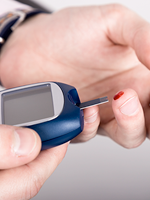Based on a presentation by David Brailer, MD, PhD, at the Academy of Managed Care Pharmacy Annual Meeting, April 18, 2008, in San Francisco, CA.
The 3 main areas fueling healthcare reform initiatives are cost, access, and quality; these areas have given resonance to the progress of healthcare information technology (HIT), because cost, access, and quality cannot be fixed without an information infrastructure in place, David Brailer, MD, PhD told the meeting attendees. "It is not so much that HIT infrastructure is so special or magic, it is because all these areas need very specific, clinically valid, timely, patient-specific, actionable information."
Progress has been made since the Bush administration announced in 2004 that HIT would be a major agenda item. Whereas in 2004 only 20% of hospitals had electronic medical records (EMR) and 5% had systems underway, today about 65% of US hospitals either have an EMR system or are putting one in place. Physicians' offices have progressed more slowly, with about 20% to 25% having EMR compared with only 10% in 2004. About 10% of physicians now use electronic prescribing. A huge standards initiative is underway to coordinate HIT across the different practices and hospitals to ensure system compatibility, said Dr Brailer, who predicts that in the next presidency, Medicare may make EMR use a condition of participation.
A 2007 poll of Medicare beneficiaries showed that 90% would prefer electronic prescriptions, allowing physicians to check their coverage and review their medical history. "The American public really understands that it is important that your information follows you," Dr Brailer observed.
But while the basic building blocks are coming together, enormous challenges remain before an efficient HIT infrastructure is created in which everyone has an EMR that is connected to a central system. The primary issue is who will pay for it. The cost is estimated to be $100 billion over a decade, but this pales when we think of total healthcare expenditures. The problem is that the doctors and hospitals who are paying for it are not the people who benefit from it, because of Medicare's obsolete reimbursement policies and fee-forservice medicine. "If you use a tool to improve efficiency and quality, your cost of care is lower, because you are seeing patients less frequently, they are being admitted less frequently, they are less likely to need lab tests, and less imaging is being done.... All that [savings] accrues to the payer." It is clear, Dr Brailer says, that the federal government will not pay for it.
Privacy is another key challenge. Online EMR repositories, such as Google Health and Microsoft Health Vault, are not coverage entities under the Health Insurance Probability and Accountability Act (HIPAA) and, therefore, are not subject to state privacy rules. Such entities could choose to make the information available to a pharmaceutical company directly or sell it for insurance underwriting use. "Privacy challenges are going to flare up in the next couple of years," says Dr Brailer. "HIPAA was never designed for a digital era."
Americans understand that person-based portability of their health records has great benefits, and that every time they enter an emergency room they will not be asked the same questions about what lab tests they have had or what imaging studies they have had done, but 3 aspects of HIPAA make this impossible, he says.
- Patients cannot require to send their medical information to a third party. Under HIPAA, the information can only be given to the patient. Many doctors or hospitals will not send it on the patient's behalf, even when the patient asks for it.
- Providers have 120 days from the time of the patient's request to send the information, which makes this useless. "120 minutes is okay maybe, depending on what it is; 120 seconds is perfect."
- Information can be sent in whatever format providers deem efficient; they do not have to put it in an electronic format. HIT would become if and when there is an economic and regulatory pathway to portability, but this will require a comprehensive redo of the old HIPAA policies, suggests Dr Brailer
The HIT Revolution The transition into HIT is not only going to result in people having an electronic record. "This challenge that we have of trying to get the HIT revolution started is going to turn around and become a key disruptor of the brands we trust in healthcare, whether they are pharma, hospital, physician, or payor brands. It happens in every industry," Dr Brailer says. "Look at what's happened with retail. Most of the top level retail brands in American of 15 years ago don't exist." He outlines some of the advantages and consequences of HIT:
Remote monitoring. HIT will likely shift primary care to the home. There is clear evidence that remote monitoring systems using an array of very inexpensive, passive sensors can help keep patients out of nursing homes for basic, low-skill care. Such systems monitor whether someone is up and around, and whether they have done certain activities of daily living. These technologies are now available for about $200. "The ability to monitor compliance, utilization, and functional status anywhere we go is one of the key attributes of moving forward," he says.
Formulaic prescribing. The incorporation of EMR and HIT architecture will create a new class of prescriptions. For example, a patient with a urinary tract infection with an EMR containing lab results, culture results, known medication allergies, and current medications will be able to walk up to a kiosk and walk away with the appropriate treatment. "About 25% of prescriptions are formulaic, they follow an automated thought process that is driven by factual data, where subjective data have some roll but not very much," Dr Brailer says. "There may be regulatory barriers and people may be shocked if this happens, but they were shocked when you could walk up to a machine and take $200 out."
Geographic control. HIT "will disrupt geographic cartels," Dr Brailer says. "If I could describe healthcare in any way I'd say it is an industry comprised of geographic cartels." Hospital systems, payors, radiology groups, and other specialty groups try to control their geographic markets. HIT will make it possible, for example, to send radiology views remotely so that a radiologist in another location can read the results for a more competitive price. "This will start generating a tremendous amount of increased radiology utilization," he predicts. Dermatology and pathology are other likely areas that will be subject to similar disruption.
Super-consumers. Overall, 5% to 10% of consumers shape the market place. In healthcare, it is estimated that about 2% of Americans are active consumers, really paying attention to their options and treatments or treatment alternatives. Websites for specific chronic illnesses already exist where patients can talk to other similar patients and find out what they are being treated with. The Internet induces a level of highly informed user, but not expert-mediated information. "
Globalization. "I think you will see globalization of medical services," Dr Brailer says. "I've seen evidence of people in other countries beginning to develop tools...to develop and manage the medical operations of a health plan, to be able to handle all the basic primary care discussion with patients and the follow up, to be the people to respond to patient e-mails and help hammer out their problems....Much of it is happening in Asia from one Asian country to another. The United States is not the centerpiece of the global healthcare system."
Improved care, reduced cost. Dr Brailer believes that these innovations will "flip" healthcare on its head and form new ways "to deliver better care, more patient-focused care, more integrated and cost-effective care." This will shift the power to patients "in ways we haven't even begun to imagine," and generate new types of competition and decision making. One new focus will be toward prevention.
"You will see two kinds of organizations. The ones that stick their heads in the sand and say it is not going to happen, and in my view, get torn asunder by it. And you're going to see people who get it and are out ahead of it." Some of the best health systems and physician organizations are already living this revolution in real time and understand that it is not theory, but that it is well underway, he concluded.
Dr Brailer is founder and chairman of Health Evolution Partners, a private equity fund focused on transforming the healthcare industry. He served as the National Coordinator for Health Information Technology under the Bush administration.



